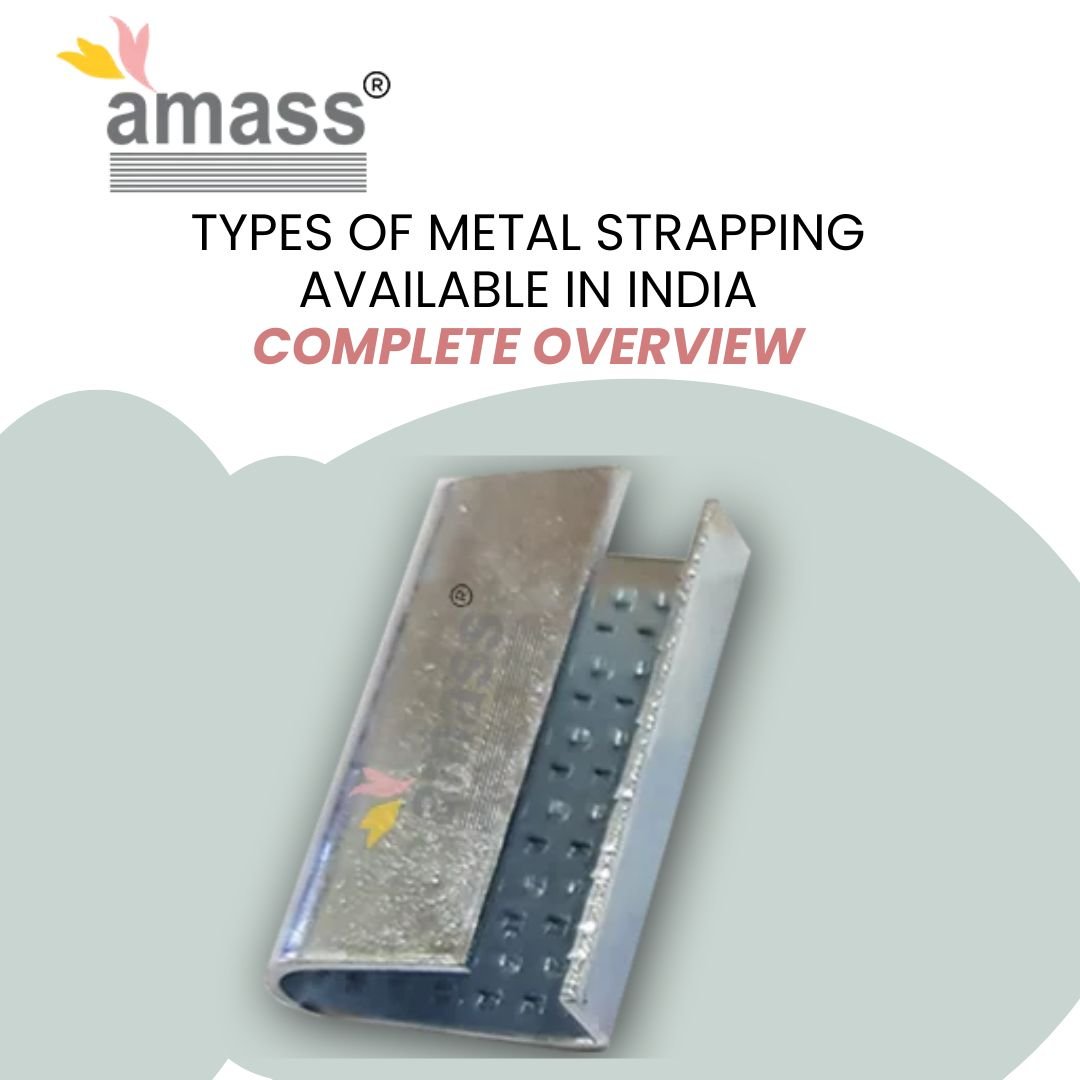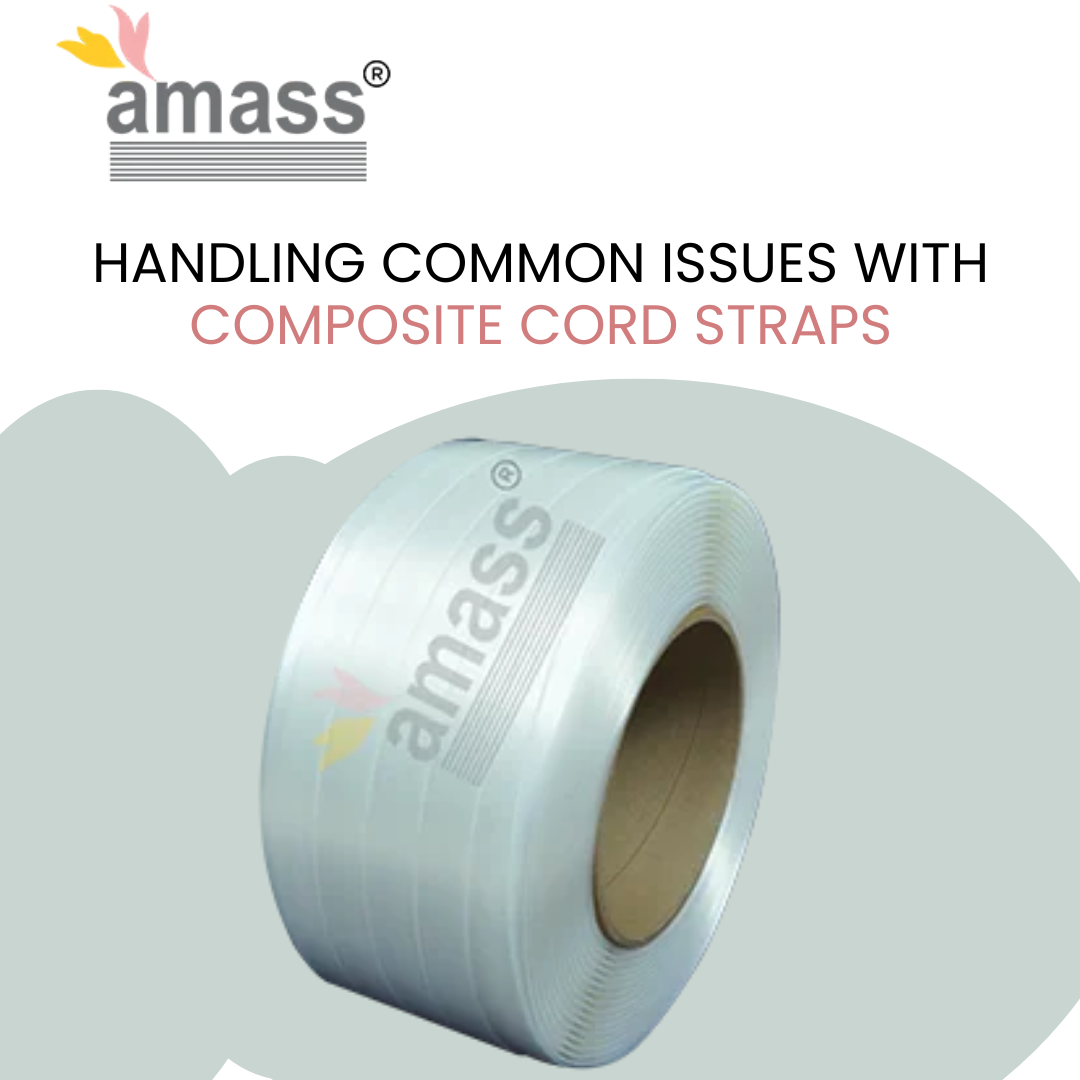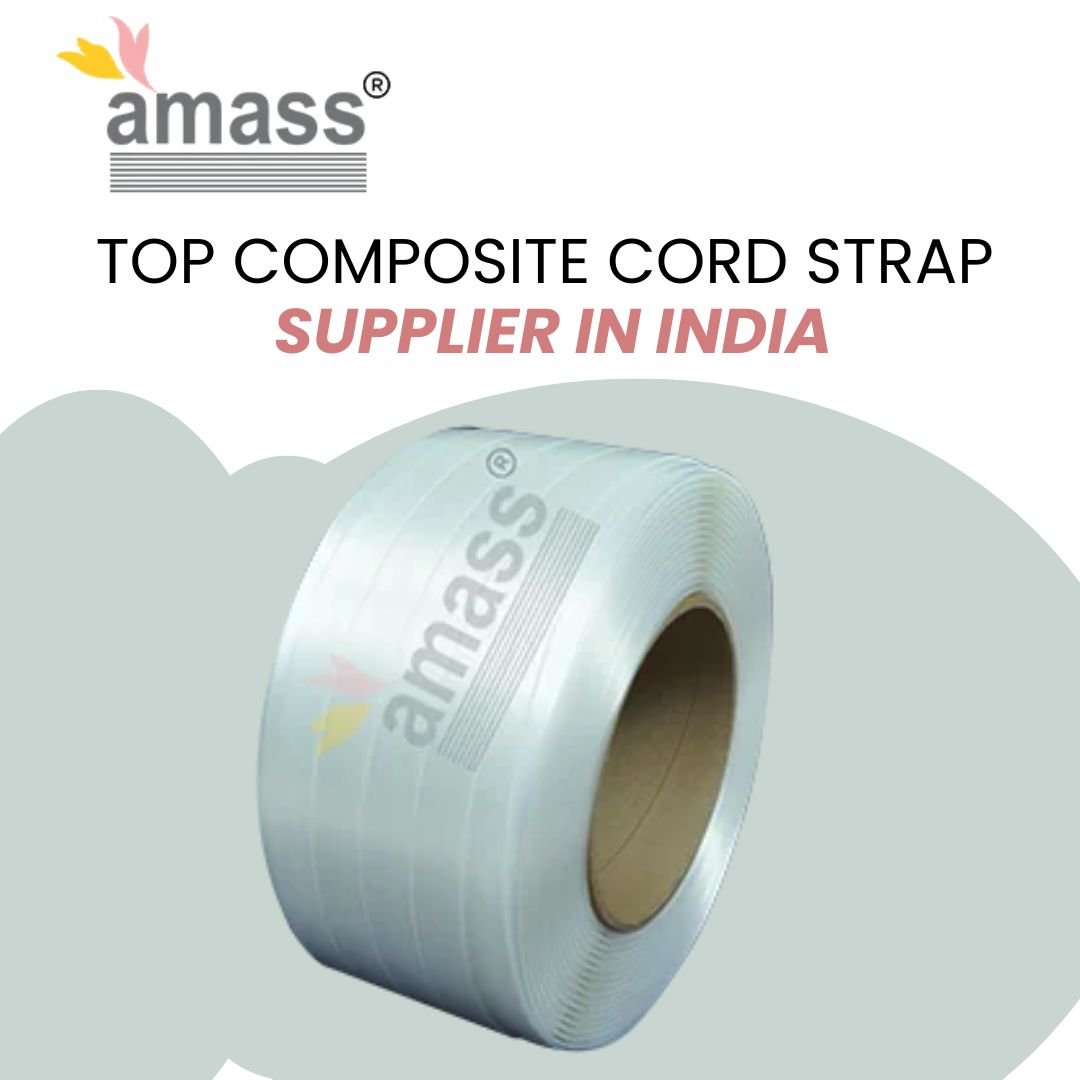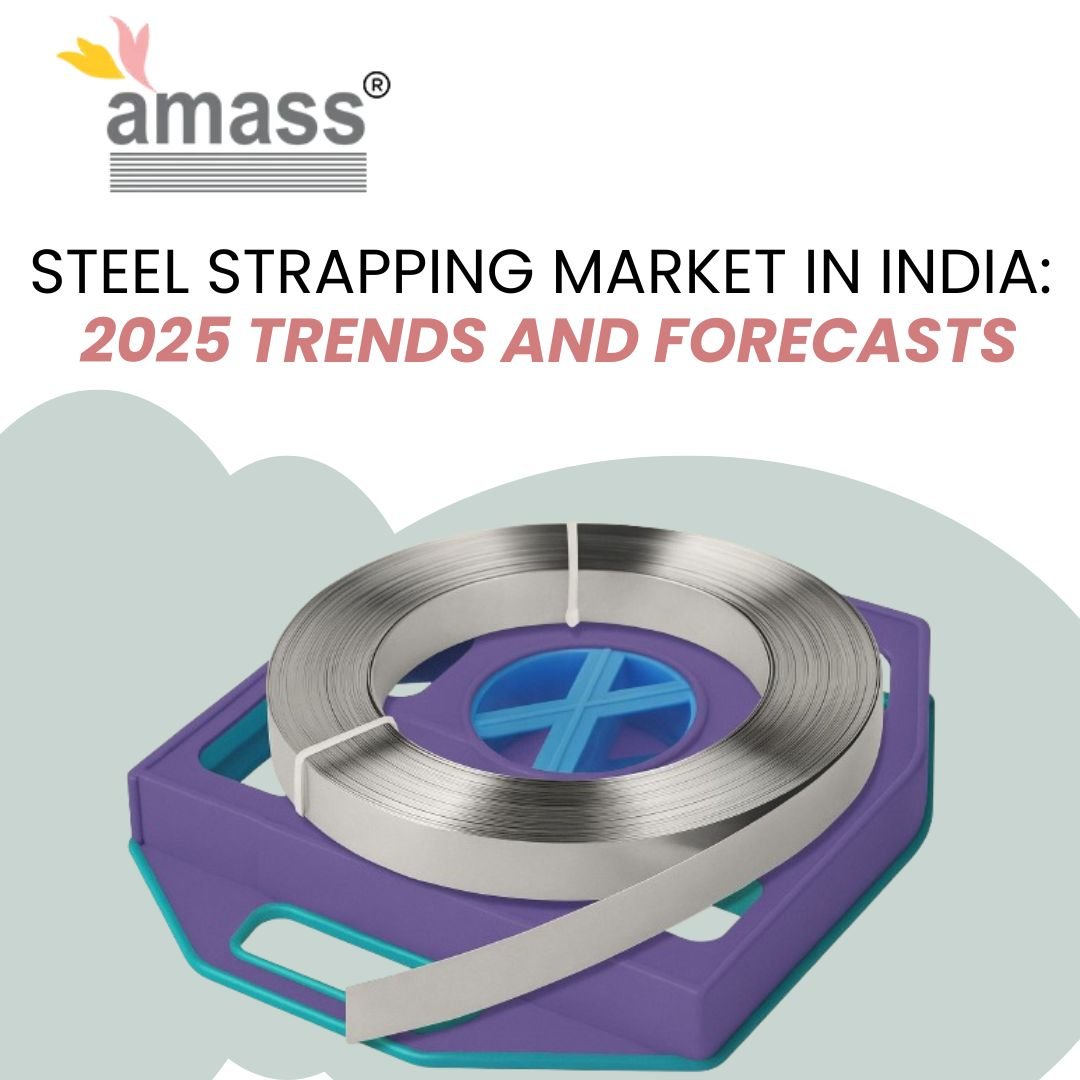Types of Metal Strapping Available in India: Complete Overview

The Rise of Eco-Friendly Strapping Tools in Packaging
June 13, 2025
Top 5 Trends in Pet‑Strap Seal Design
June 23, 2025Picture this: a bustling construction site in Mumbai, steel coils being loaded onto a truck in Chennai, or a factory floor in Bengaluru—what do they all have in common? The unsung hero holding it all together: metal strapping. In a country racing toward industrialization, metal strapping is the silent backbone of logistics, manufacturing, and construction. “The most commonly used strapping materials are Polypropylene (PP), Polyester (PET) and steel,” but when it comes to sheer strength and reliability, steel and stainless steel strapping dominate the heavy-duty landscape.
India’s infrastructure boom—driven by projects like the Delhi-Mumbai Industrial Corridor and massive housing initiatives—has sent demand for metal strapping skyrocketing. For starter entrepreneurs, understanding the nuances of metal strapping isn’t just useful; it’s a competitive edge. The right choice can mean the difference between a load that arrives intact and one that doesn’t—between a project that stays on schedule and one that faces costly delays.
Core Types of Metal Strapping: Regular, High Tensile, Stainless, and Galvanized
Let’s cut to the chase: not all metal strapping is created equal. In India, the market is dominated by four main types—regular steel, high tensile steel, stainless steel, and galvanized steel strapping. Each has its own superpower, tailored for specific challenges.
Regular steel strapping is the workhorse. It’s affordable, widely available, and perfect for general packaging and bundling. But when the stakes are higher—think heavy machinery or massive steel coils—regular steel might not cut it.
Enter high tensile steel strapping. Manufactured from low and medium carbon strips, these straps are engineered for strength. “High Tensile Steel Strappings are manufactured from low and medium carbon strips. Proper selection of steel has to be done to ensure ideal combination of physical properties. We offer straps for both Light and Heavy Duty applications to provide wide choice to the clients,” explains a leading supplier. High tensile straps are the go-to for heavy-duty applications, from securing steel coils to reinforcing construction materials.
Stainless steel strapping is the aristocrat of the bunch. It’s corrosion-resistant, making it ideal for harsh environments—think coastal regions, chemical plants, or food processing units. “Plain SS Banding for Cable Bundling, Packaging Type: Rolls · Silver Stainless Steel Strap, For Oil & Gas Industry, Material Grade: 304,” lists a prominent manufacturer, highlighting its versatility3. Stainless steel is also a favorite in the electrical and oil & gas sectors, where reliability is non-negotiable.
Galvanized steel strapping is the best of both worlds: the strength of steel with added corrosion resistance. It’s coated with a layer of zinc, making it suitable for outdoor storage and transport. Galvanized straps are especially popular in agriculture, export packaging, and construction sites exposed to the elements.
Key Properties and Performance Metrics: Strength, Durability, and Corrosion Resistance
What separates a good metal strap from a great one? It’s all in the numbers. Let’s talk tensile strength, elongation, and corrosion resistance—the trifecta that defines performance.
Take high tensile steel strapping, for example. “Our steel straps are crafted to ensure high quality without compromise, providing exceptional physical and geometrical properties simultaneously. Each millimetre of the strap undergoes a state-of-the-art heat treatment process using PLC-controlled automation that delivers superior elongation, shock resistance, and break strength,” notes a top industry player. The result? Straps that can handle break loads ranging from 344 kg to a staggering 3,803 kg, depending on the grade and dimensions.
Elongation—the ability to stretch without breaking—is another critical metric. High tensile straps can achieve elongation rates of up to 12%, making them incredibly resilient under stress. This is crucial for applications where loads shift during transport, preventing snap failures that could spell disaster.
Corrosion resistance is where stainless and galvanized steel shine. Stainless steel, especially grades like 304, is virtually impervious to rust, making it ideal for humid or corrosive environments. Galvanized steel, with its zinc coating, offers robust protection against the elements, ensuring that straps remain functional even after prolonged exposure to rain or saltwater.
Industry-Specific Applications: Construction, Manufacturing, Logistics, and Beyond
Now, let’s see where these straps really flex their muscles. In construction, high tensile and galvanized steel strapping are indispensable for securing scaffolding, bundling rebar, and reinforcing concrete forms. The sheer force required to hold together tons of steel and concrete demands nothing less than the best.
Manufacturing is another arena where metal strapping proves its worth. “High tensile straps is the ultimate solution for heavy-duty applications such as hot and cold rolled coils, including for use in the steel industry. ULTRA PRIME straps is the product of choice for the heaviest applications,” observes a leading supplier. From steel mills to automotive plants, these straps ensure that heavy components stay put during handling and transport.
Logistics is where metal strapping truly comes into its own. Whether it’s securing pallets of machinery for export or bundling pipes for cross-country shipment, the right strap can mean the difference between a smooth delivery and a logistical nightmare. Stainless steel is particularly favored for international shipping, where exposure to saltwater and humidity is a given.
But it’s not just about brute strength. Metal strapping is also used in niche applications—cable bundling in the electrical industry, securing oil and gas pipelines, and even in the packaging of heavy-duty agricultural equipment. The versatility is staggering, and the right choice can unlock new efficiencies across the supply chain.
Innovation and Technology in Metal Strapping: Coatings, Finishes, and Automation
The metal strapping industry isn’t standing still. Innovation is driving performance to new heights, and automation is reshaping how straps are applied.
Advanced coatings and finishes are a game-changer. “Our Steel Strappings are treated with a Wax coating finish. This lubrication allows the strapping to flow smoothly in automatic machines, tools and around corners of the products,” explains a manufacturer. Other finishes, like blued tempered, painted, and zinc-coated, offer varying levels of corrosion resistance and ease of use, tailored to specific environments and applications.
Automation is another frontier. PLC-controlled winding processes ensure uniform tension and quality across every coil, while automated strapping machines can secure loads in seconds, reducing labor costs and human error. “Oscillating rolls are wound for a longer duration, reducing the frequency of coil replacement until the limit is reached. Strapping heads are primarily used in fully automated applications,” highlights a supplier. This is especially valuable in high-volume operations, where speed and consistency are paramount.
The integration of smart sensors and data analytics is the next wave. Imagine strapping systems that monitor load integrity in real time, alerting operators to potential failures before they happen. While still emerging in India, this technology is set to revolutionize the industry in the coming years.
Sustainability, Recycling, and Regulatory Standards
Sustainability isn’t just a buzzword—it’s a business imperative. Metal strapping, especially steel and stainless steel, is inherently recyclable. Unlike plastic alternatives, which can linger in landfills for centuries, metal strapping can be melted down and reused indefinitely, reducing environmental impact.
Regulatory standards are also tightening. International norms like EN 13246:2001 and ASTM D-3953 set the bar for quality and safety, ensuring that straps meet rigorous performance criteria. “All the tolerance levels of KRISHCA Steel Strapping meet international standards EN 13246:2001 & ASTM D-3953,” notes a manufacturer. For Indian businesses, compliance with these standards is increasingly a prerequisite for export and large-scale contracts.
The push for sustainability is also driving innovation in coatings and finishes. Environmentally friendly paints and waxes are becoming more common, reducing the ecological footprint of metal strapping production and use.
Challenges and Opportunities: Market Trends, Pricing, and Supply Chain Dynamics
Every silver lining has a cloud, and the metal strapping market is no exception. Supply chain disruptions, fluctuating steel prices, and intense competition are constant challenges.
On the flip side, the opportunities are vast. The rise of automation and advanced materials is opening new doors for innovative players. Customization is key—businesses that can tailor their offerings to specific industry needs are winning big. “To beat the competition and stand tall in the market we are engaged in Exporter Manufacturer Supplier Trading Company of High Tensile Steel Strapping,” notes a supplier, highlighting the importance of differentiation2.
Pricing is another wildcard. With steel prices subject to global and domestic pressures, staying agile is essential. The ability to source high-quality raw materials at competitive rates can make or break a business in this sector.
The market is also becoming more sophisticated. Customers are demanding not just quality, but also value-added services—technical support, training, and after-sales service. Companies that can deliver on these fronts are building lasting relationships and securing repeat business.
Amass Strapping Solution: Tailored Offerings and Business Excellence
At the heart of this dynamic market is Amass Strapping Solution. Amass isn’t just a supplier—it’s a partner for businesses navigating the complexities of construction, manufacturing, and logistics.
Amass offers a comprehensive range of metal strapping solutions, from regular and high tensile steel to stainless and galvanized options. The company’s focus on quality, innovation, and customer service sets it apart. By leveraging advanced coatings, automation, and cutting-edge technology, Amass ensures that its clients get the best possible performance and reliability.
But what really sets Amass apart is its commitment to customization. Recognizing that one size does not fit all, Amass works closely with clients to develop tailored solutions for their specific needs. Whether it’s a construction site in Pune, a steel mill in Jamshedpur, or a logistics hub in Delhi, Amass delivers strength, durability, and peace of mind.
The company’s dedication to sustainability and compliance with international standards further reinforces its reputation as a trusted partner. In a market where quality and reliability are non-negotiable, Amass Strapping Solution is leading the charge.
Future Outlook: Emerging Trends and Strategic Recommendations
So, what’s next for metal strapping in India? The future is bright, but it’s not without its challenges. Automation, smart technology, and advanced materials are set to dominate the landscape. Companies that invest in these areas will be well-positioned to capitalize on the growing demand for high-performance strapping solutions.
Sustainability will continue to be a major driver. As environmental regulations tighten and customers become more conscious of their ecological footprint, recyclable and eco-friendly strapping options will gain ground.
For starter entrepreneurs, the message is clear: stay agile, invest in innovation, and prioritize customer service. The metal strapping market is complex and competitive, but for those willing to embrace change and focus on quality, the opportunities are limitless.




